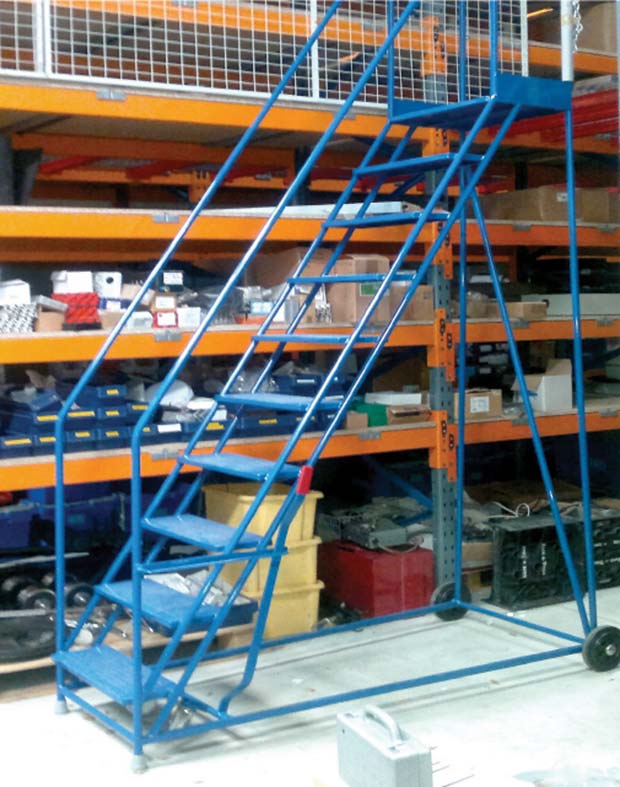First off this month, we look at live storage and the difficulties that can be experienced when using non original parts and then our second question looks at mobile steps asks if this is the best way of accessing an upper tier.
 Live storage, can I mix and match
Live storage, can I mix and match
Q. I am looking for an alternative supplier of live racking parts. Are there specific standards that the parts should be made to? I just want to double check that parts we are being offered are to the correct specification.
With reference to the off load beams at the front of the racking, is there a certain type that should be used? We have a couple of locations that are bolted 3 times to the uprights, and others have pins and 1 bolt. Are both systems safe to use?
A.SEMA are currently writing a Code of Practice for Live Storage Racking which will include general design guidance for these types of systems. It will not, however, provide specific details, such as the number of bolts or how the parts are manufactured. Each manufacturer’s design is different and is specific to their storage product. Because of this SEMA generally recommend that replacement parts should be supplied by the original manufacture.
If ‘compatible’ components are being considered, the following items should also be carefully considered:-
1. The specification for the supply of the ‘compatible’ component.
2. The resources and competency of any contractor or supplier being used.
3. The warranty/guarantee should be clearly defined in writing. The supplier may underwrite the performance of the entire installation or, what is more likely, may only underwrite the performance of the component supplied.
Please note; if the warranty only applies to the replacement component, then it may be difficult to ascertain who would be responsible in a possible incident involving original and replacement material.
Stairway to heaven
Q. Please see the photo of the current access equipment used to gain entry onto the mesh walkway of our two tiered racking system. The 1 metre wide walkway is u shaped and approx. 8M x 6M in total, with a height from the ground of 2.5mts.
The concern we have is that the mobile steps consist of overlapping tread so when walking down you cannot place your foot on the whole step, and visibility is impaired when carrying boxes. I am finding it difficult to find guidance on what is required for safe use and if better mobile steps or fixed steps are the answer. Is there a standard for step angle, size and width for tiered racking?
A. I have had a look at the photograph that you sent through and think I understand the problem though obviously I am limited to what can be seen in the image.
First of all I do not consider a set of mobile steps to be a safe way of obtaining access to what is in essence a mezzanine picking floor. The reasoning being exactly as you describe in the difficulties of carrying goods to ground level and also the possibility that the steps may get moved for other operations while someone is up on the floor carrying out a pick. As far as I can see from the photos there seems no way of securing the steps to the platform while someone is on the raised area and not visible from the floor.
Mobile steps can be used for infrequent high picking directly off the steps however if there is a need to frequently access high levels or to access a walkway then from a safety and from an economic point of view a safer solution should be found.
The obvious answer would be to provide a permanent stair. There is a British Standard specification for Industrial stairs ladders and walkways setting out exactly what the range of slopes of a stair should be and what various ‘rises’ and ‘goings’ of the treads are allowed, to prevent a stair causing people to stumble when climbing up or down them.
All mezzanine structures of this type where people access the top level by walkways are required by law to have building regulation approval where means of escape to the nearest fire exit together with structural calculations to justify the strength of the structure are required. This will also cover the design of the stair itself. Perhaps you will need an alternative means of escape possibly involving two staircases so this can be quite expensive to implement and may take up quite a lot of space.
An alternative would be to remove the floor altogether and provide a power operated high level order picking machine so your operatives can safely access the high level picking and storage locations from the machine without having to climb the stairs or climb on the racking at all.




Comments are closed.